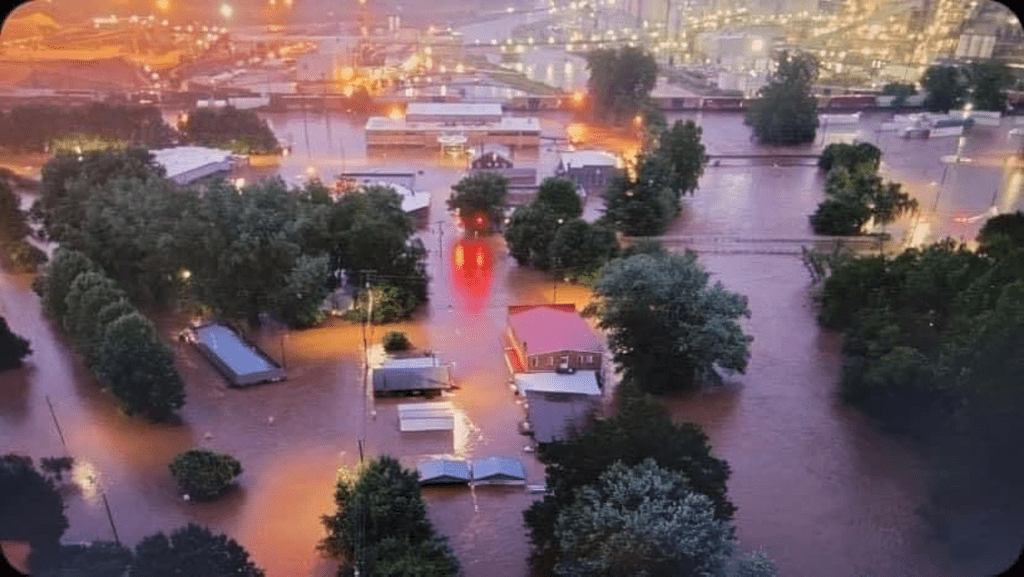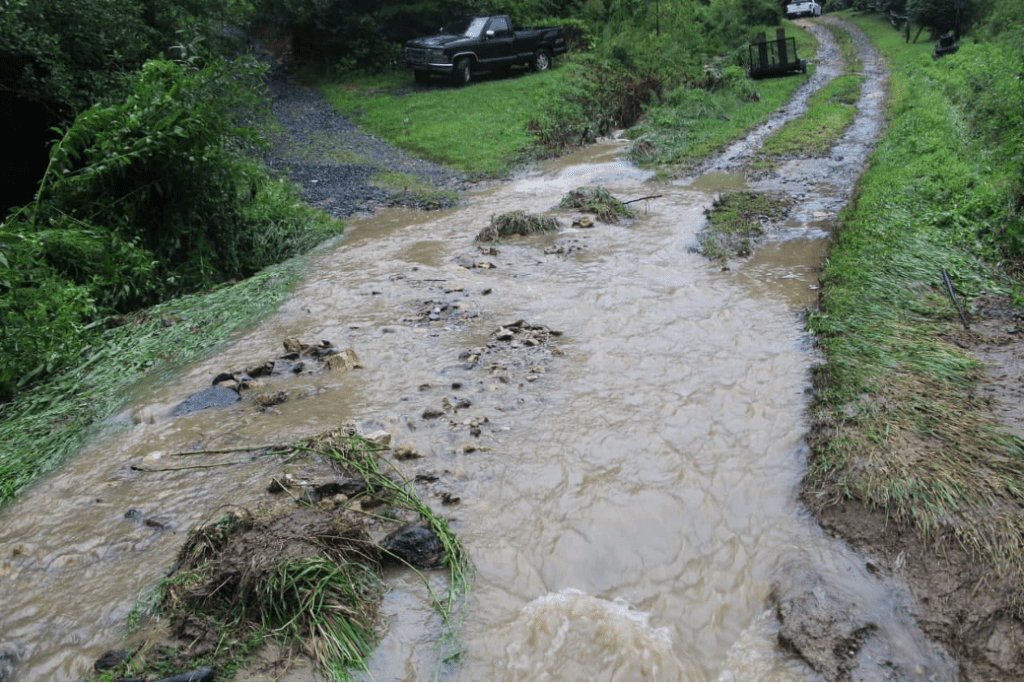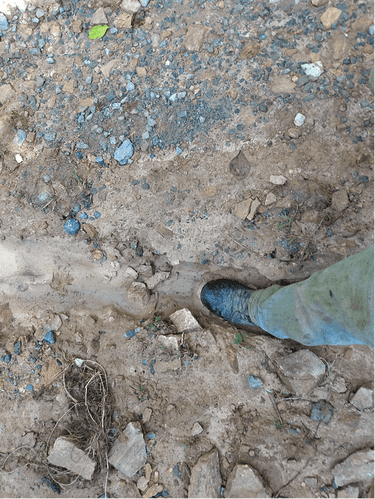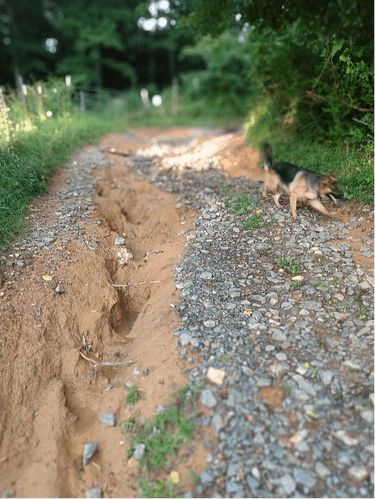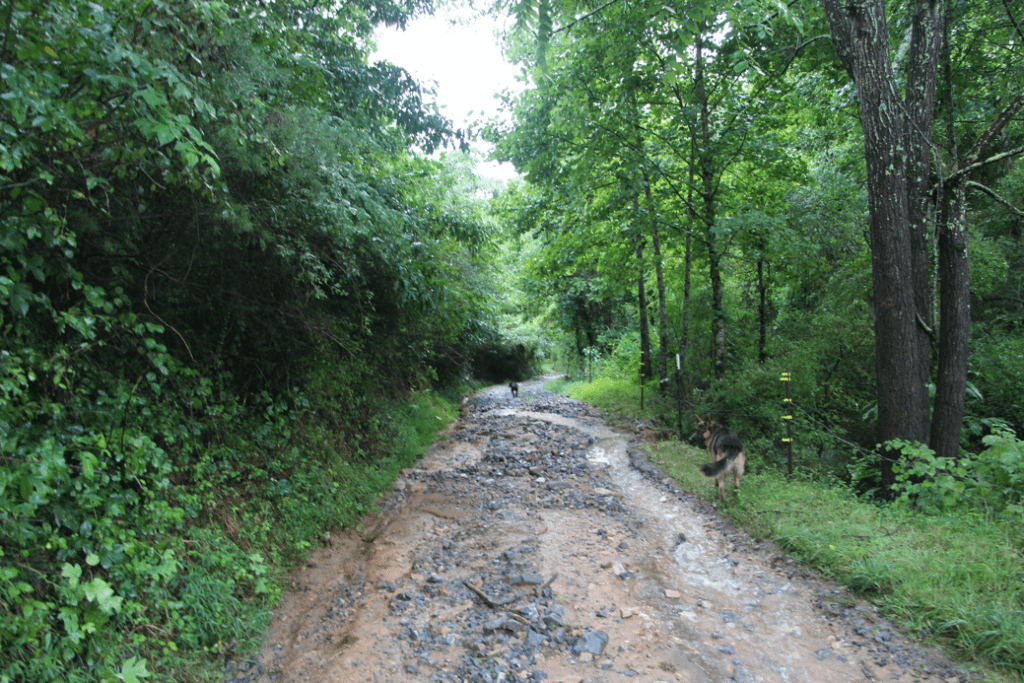With Hurricane Ian making landfall again, this time in South Carolina, the Peak Team felt it appropriate to repost this article. We hope our readers that may be impacted by this storm stay safe. Also, our hearts go out to everyone in Florida impacted by this hurricane. For more articles like this regarding preparedness subjects and advice, visit our Resilient Life page. - Chris and the entire Peak Team
For many parts of the country, the specter of a potential flood in your community comes and goes with storms, snow melts and hurricanes. Floods can truly happen at any time, in any place, with the right conditions.
On August 17, 2021, parts of Haywood County located in the mountains of North Carolina, received record-breaking amounts of rain in a short time. In our nearby area, we got about 17 inches in 24 hours. As a result, the rivers and creeks swelled quickly.
Catastrophic flash floods occurred leaving seven people dead, and at least 500 homes destroyed or damaged so severely it will take a long time to repair them. That is quite a few families with nowhere to go. Plenty of people have tried to stay in flood-ravaged homes as a result.
My husband and I were lucky in that we live on the side of a mountain and not near any rivers or creeks. The second property lower on the road where my dad lives made it through ok, but the neighbors that are not more than a few hundred feet from him had a lot of their outbuildings, fences, and animals swept away.
The worst-hit area was Cruso, NC. That is where the majority of the wrecked homes and all the deaths occurred. It is just over the mountain from us.
I have been through a lot of floods. When I was a child in western Washington, the Skagit River regularly flooded. I went through some 100-year level floods. The entire town of Hamilton, WA, was wrecked regularly.
Typically, the Federal Emergency Management Association responded quickly to help. In the case of the people of western North Carolina, that has not been the case. It took a long time.
[caption id=“attachment_513168” align=“aligncenter” width=“1024”]
The town of Canton, NC after remnants of Tropical Storm Fred dropped 15 inches or more of rain within six hours. The weather forecasts predicted six inches total over a 24-hour period. People were not prepared.[/caption]In this article, I am going to talk about risk factors, how to be prepared for floods, what to do during them, and how to clean up and start to rebuild after.
Who is at risk for flooding?
- People in areas that are prone to hurricanes.
- Anyone that lives or works near a river or stream.
- Areas where there is a snowpack.
Flash Flood Risks
A flash flood happens when there is extreme precipitation in a short period. Heavy rain upstream from where you are located can result in catastrophic flooding even if you receive no rain at all in your area.[caption id=“attachment_513172” align=“aligncenter” width=“1024”]
The water flow at 300 ft. in elevation below where our house sits. This was taken more than an hour after rains had stopped. During the rain, the road was a raging river.[/caption]Evacuate when advised
Staying through a flood is dangerous. Unless your house is built for it, then you should not even consider it. Even homes that are well off the ground are not immune to large amounts of debris slamming into them.If you know the warning signs that a flood is going to happen, try to evacuate early so you can avoid getting trapped in traffic or running water.
Never drive through moving water, keep a glass breaker in your car
A lot of people have been swept away or had their cars totally flooded because they tried to drive through moving water. Water has a lot of force behind it, and there can be debris in it as well. You also need to consider that it can be difficult to determine the depth of moving water. That depth can also change very fast.At the same time, if you get stuck somewhere or if waters rise rapidly, you may find yourself in water that is moving. If you cannot get out via your door, you will need to break the glass. A glass breaker is an inexpensive tool to keep in your car. A seat belt cutter is often built into glass cutters. Make sure that you have both a glass breaker and a seat belt cutter so you can get out of your car as quickly as possible.
Have a 72-hour kit ready to go
At the bare minimum, you need to have 72 hours of supplies ready to go in case there is an emergency. 72-hour kits are different than bug-out bags because they are intended to get you to a location where you can be better supplied. A hotel room, for example. During the floods I experienced, we always rode it out in an inexpensive hotel. There were always some people we knew in adjoining rooms because basically, our entire town had to evacuate for as long as five days at a time. Of course, school was canceled, or those that were in flooded areas were excused.Here is what a 72-hour Kit should include:
- Food
- Clothing
- Water and water filter
- Small medical kit
- Hygiene Items
- Rain Suit
- Battery bank for cell phone
- Flashlight
- Multi-Tool
- Formula (A whole container is not a bad idea)
- Diapers
- Clothing
- Blankets
- Medical Kit
Packing the Car
When you are evacuating from a flood, it can be easy to find yourself throwing everything you can into your vehicle. This can lead to delays in evacuation. You need to prioritize what you pack. Here are some basic guidelines.People and Pets
Leaving enough room for the whole family, including cats and dogs, is the priority.
Essential Supplies
You need items to get through the next week or so while the flooding occurs and the aftermath.
Valuables and important documents
Guns, gold, silver, and jewelry are all examples of items that you can throw in your vehicle—looting after a flood is all too common. If you have the time, either take valuables with you when you evacuate. At the same time, remember that your life and the life of anyone in your family are precious. Don’t risk your life for and the lives of those you love for treasures.
Make copies of important documents and keep them in a waterproof folder or scan them to create a digital archive.You need a folder of important documents that you can take with you, or you need to make sure you have a digital copy on USB or similar that you can retrieve. Some documents can be very hard to get after a disaster. And sometimes, local law enforcement will not let you return home without proof of residence.
Entertainment
Waiting out a flood at a hotel or shelter can be boring. Back in the early to mid-90s, when I went through the 100-year floods, all we had was an old-school TV. The one advantage was that staying in the "city" meant we got to watch MTV. That was a big deal because we did not have a television in our home while growing up.Nowadays, things are different. Pack your tablet, e-reader, and laptop. Make sure there are things for kids to do as well.
Set aside some cash
I know it can be hard to set aside money during times where things are increasing in cost at a rapid rate. At the same time, if you live in an area prone to flooding or other disasters, it is wise to set aside some money to pay for lodging, meals, and some entertainment during a disaster such as a flood. While FEMA is known to reimburse the cost of staying in a reasonably priced hotel during a disaster, you still have to pay for it yourself first and then get reimbursed later. This may be a time when using a credit card is what you need to do, although having some money in the bank is always better.Do not return until it is declared safe
It is always tempting to return to your home as soon as possible. The reality is that you may think that it is safe when it really isn’t. Standing water can take some time to recede. There can be downed power lines, trees in the way, and other hazards. This is one time when you should listen to officials for sure.[caption id=“attachment_513175” align=“aligncenter” width=“625”]
Water is very powerful. This is an example of just a moderate rut that was gouged out during the storm.[/caption]Be careful when returning to a flooded area
Just because you are allowed to return doesn’t mean you don’t have to be careful. Depending on how much of an impact the flood had on your area, you could face the following hazards.A flooded interior
A flood can take all your stuff and move it wherever it wants. If you have a two-story home, then maybe the top story is ok, but the bottom may be wrecked and uninhabitable.
Damaged structural integrity
A flood can cause structural damage that makes your home unstable and not safe to sleep in. You need to be careful and check for damage when you return. If a lot of debris has hit your home and is pressing against it, then it may not be safe to occupy.
Wildlife in your home
There was a story on Citizen Free Press after Hurricane Ida that showed a video of a man being killed by an alligator that was in his home. These things can happen. While an alligator is an extreme case, you might find that your home has either dead or alive wildlife in it. Even small animals can be dangerous when caught by surprise, especially when they are hungry, scared, or possibly injured. Adults should inventory the home before allowing kids to enter after any flood. Personally, I would not enter without a firearm or at least something that could be used to hit at something. Chances are animals will want to put distance between you and them, but that is not always the case.
Looting
A lot of law enforcement agencies take a lot of precautions to help prevent looting, but that doesn’t mean it cannot happen.
Even in small communities where everyone seems to know everyone, looting can happen. Outsiders will even make an effort to go to an area to rob from suffering people.
The hardest-hit area in Haywood County during the flood instated a curfew and checkpoints to prevent looting after there were numerous reports of theft and gunshots from those defending their homes. A curfew from 10 pm to 6 am went into effect, and that helped some, but I really think the checkpoints at the main roads prevented a lot of the trouble. This is one case where I think checkpoints were necessary to avoid trouble and to make sure that the only people going in or out were those that lived in Cruso or that were going in to help with clean up and recovery. Everyone is thankful that no one was seriously hurt or killed due to looting.
Mold and Mildew
Those with allergies need to be very careful when returning to flooded homes. Any items that you want to save that got wet need to be dried out as quickly and thoroughly as possible. Mold and mildew can cause severe respiratory problems. When things dry out, there is the problem of fine particulates. River silt can be really nasty. During clean-up, it is important to wear a particulate respirator if you are dealing with dried silt.
Washed-out roads are treacherous or impassable
The main damage we experienced was a washed-out road. Basically, the flood took our roadbed back to what it was 20 years ago. The old original rough bed was exposed, and huge ruts appeared. All the gravel that we spent money on over the years is gone. The video below shows the lower road from the perspective of my cousin's house. My husband has been working on getting some of the road smoothed out, and we are putting in a large culvert on part of it. The road was never great to start with, but now it is almost impassable in some of the upper sections.Flooding can cause sinkholes to appear and take out huge sections of pavement. In Haywood County, we have dozens of bridges that were either destroyed or that are now in need of drastic repairs. The bridge that people in our community use was damaged. Some repairs were made, but nothing was done to combat the significant cracks in the main supports. Just for the record, our bridge, like so many, was supposed to be replaced years ago, but the state keeps putting it off.
In Cruso, temporary bridges have been put into place to help people get supplies delivered when needed and provide access to the main road so they can get to town to jobs.
During a flood and the aftermath, you may have to take detours that add a substantial amount of time to your commute.
[caption id=“attachment_513179” align=“aligncenter” width=“1024”]
One of the few flatter sections of road still looked more like a washed-out creek bed than a road.[/caption]Flood water is very nasty
Floodwater often contains very high levels of bacteria. If you are near an area with many farms, the water may be particularly filthy. Wading in floodwaters can result in infections. Every little cut or scrape you have on your skin is likely to get infected. Getting floodwater in your mouth can result in severe gastrointestinal illnesses such as e Coli or Salmonella. If you ingest or come into contact with floodwaters, you should get treated. Even just taking a long shower and applying antibiotic ointment to any cuts, scrapes, or scabs is highly advisable.Do not walk in it or wade unless you absolutely have to.
Document any damage
If you have to make an insurance or FEMA claim, you need to take a lot of pictures and take notes of any damages. Be very thorough. Insurance adjusters or FEMA reps may want to visit your property and make an assessment themselves. The president took a long time to sign the declaration to make it a federal disaster zone. This could happen to you as well. Of course, you do not want to wait to clean things up; thus, documenting the damage is essential.This is a companion discussion topic for the original entry at https://peakprosperity.com/tips-for-surviving-and-recovering-from-a-flood-2/
